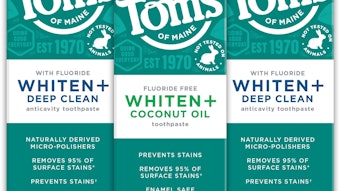
Have you ever wondered what your mouthfeel experience would be if you brushed your teeth with unflavored toothpaste? There are a few descriptors to mention: bitter, astringent, metallic, salty, numbing. Oral care is a distinctive space for flavor creation and science, where innovation for clinically proven benefits and enjoyable olfactive experience merge together to excite the consumers with compelling dental health products.
Flavor as a Driver of Dental Health Regiment Compliance
Toothpaste is formulated to deliver oral care benefits ranging from prevention of caries and fighting plaque, to breath freshness and relief of dentin hypersensitivity. The efficacy of the dentifrice is extremely important, because it is tightly linked to increased consumer desire for improved oral health and well-being. Along with efficacy, taste is another important attribute of oral care products because it is directly linked to consumer preference, usage and purchase. Consumers are looking for toothpaste functionality to target specific oral care problems and maintain dental hygiene, but flavor is the first touch point of their experience. Flavor has the power to signal the benefits and activate desire for regular use of the product. Formulations with pleasing and delightful taste drive consumer exposure to novel products, strengthen the emotional connection with them and ensure regimen compliance. This translates into enhanced therapeutic value and efficacy for the user.
Flavor Creation Challenges of Novel Oral Care Products
Taste is the sensory response to the fluid environment in the mouth.1 It is mediated by groups of taste receptor cells clustered in layered balls known as taste buds. Hair-like extensions of the taste receptor cells protrude into a central pore at the top of the taste bud. The pore makes contact with the fluid environment in the mouth and the taste molecules interact with these extensions at/or near the opening. This causes chemical changes within the sensory cell that result in neural impulses being transmitted via different nerves to the brain where the signal is decoded and taste is perceived. Besides the five main classes of taste, a variety of chemically-induced sensations can be perceived in the oral cavity.2-3 These are described as chemesthetic sensations and occur through stimulation of the trigeminal nerves of the oral cavity, for example metallic and astringent. Metallic sensation arises from placing different metals or their salts in the mouth that trigger stimulation due to small changes in electrical potential. Astringency is defined as “Drying of the mouth, roughing of oral tissues and pucker or drawing sensation felt in the cheeks and muscles of the face.”4 The mechanism of astringency involves binding; for example, polyphenols to salivary proteins and mucins (slippery constituents of saliva), causing them to aggregate or precipitate, thus robbing the saliva of its ability to coat and lubricate oral tissues.
To support whole mouth health, a toothpaste formulation might contain multiple excipients that work in synergy and complement each other. An excellent example of such novel “holistic” toothpaste is the most recent introduction of advanced fluoride toothpaste with Dual Zinc plus Arginine therapeutic active. Through the unique combination of zinc oxide, zinc citrate and a multifaceted amino acid, it delivers clinically proven reduction of dental plaque and gingivitis, suppresses tartar build up by inhibiting crystallization, freshens breath through combination of its antimicrobial properties and neutralizes volatile sulfur compounds. These benefits strongly support today’s consumer desire for whole mouth health. However, the dentifrice base presents taste challenges due mainly to the presence of zinc containing excipients as they impart undesirable off-notes. Zinc-containing molecules interfere with the normal performance of the human taste system by binding to the taste receptor proteins. In doing so, zinc can alter taste and inhibit chemesthetic stimuli of flavor ingredients added to the oral care formulation. Zinc can also bind to salivary proteins, which may alter in a negative way the ability of saliva to lubricate the oral mucosa, which imparts the sensation of astringency. Additionally, zinc oxide and zinc citrate impart a metallic sensation.











